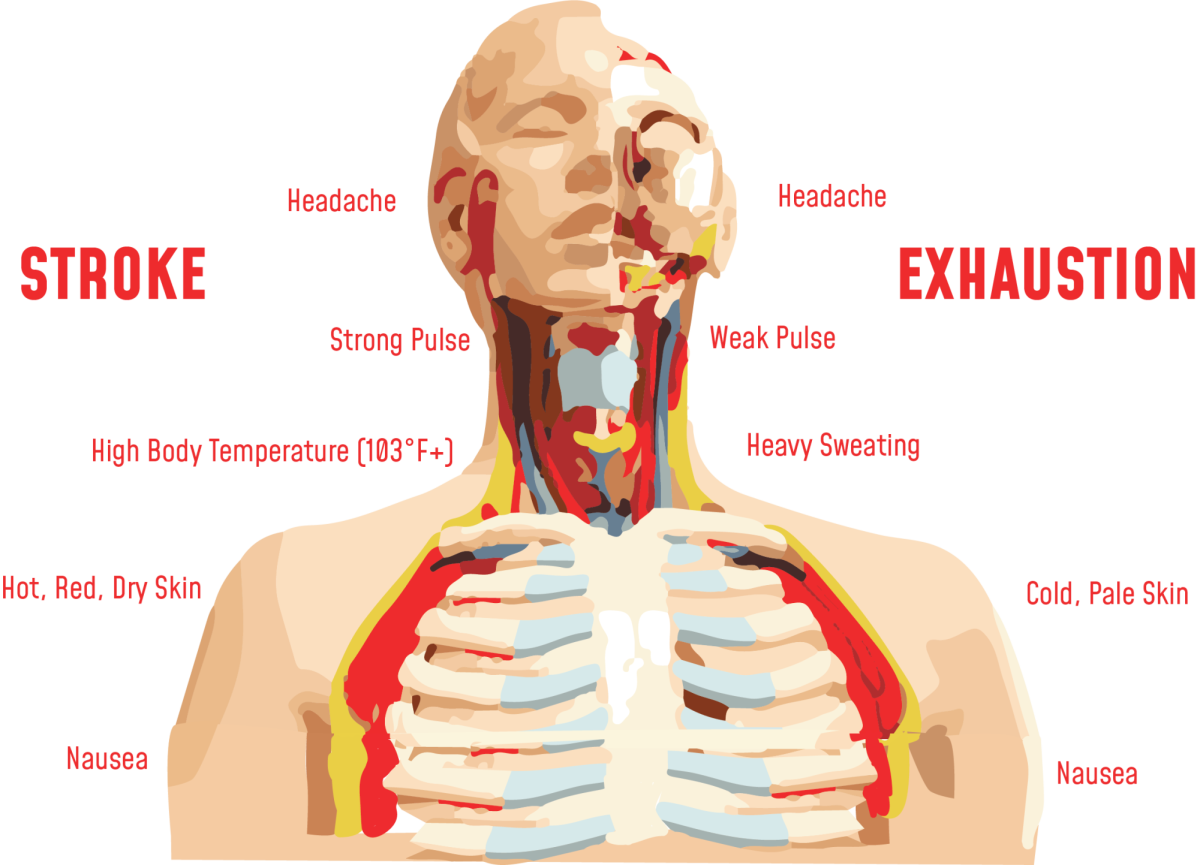Climate change has significantly impacted almost every aspect of human life, and sports are increasingly feeling its effects: constantly having to make sacrifices to avoid the heat. In fact, 2023 is projected to be the hottest year ever recorded in human history, raising the risk of suffering from a heat-related illness during physical activity.
According to data from the Centers for Disease Control and Prevention (CDC), there were 494 reported deaths as a result of heat illness in the year 2000. Just 22 years later, that number escalated to 1,708. External heat illness is one of the leading causes of death for young athletes and participating in any physical activity increases the chance of heat-related illnesses, especially when outdoors.
This increase caused by the rising climate doesn’t appear to be slowing down. According to the National Oceanic and Atmospheric Administration (NOAA), the global average surface temperature has more than doubled since 2000 and the 10 hottest years ever recorded have all occurred after 2010. Advent Health emergency room doctor David Sarkarati suspects that if the current trend of climate change persists, all outdoor sports will have to continue making sacrifices to avoid the heat and these could become permanent changes.
“Athletics, like so many other aspects of our society, will have an effect [from climate change] for sure,” Sarkarati said. “I think there will have to be a greater awareness and modifications of equipment and the time of day [for practices], along with other protocols.”
Severe restrictions to limit the chance of heat-related illnesses have been taken in states at high risk. Athletic trainer Sheena Wilson has dealt with athletes suffering from heat exhaustion in the past and is in support of all restrictions placed on outdoor sports by the Florida High School Athletic Association.
“A lot of people are not adapted to this kind of heat, so if you loosen the restrictions, you’re putting even more kids at risk,” Wilson said. “These are factors that were not looked at before but have to be considered now.”
The most common heat-related illnesses among athletes are heat cramps and exhaustion, but occasionally an athlete will suffer from a severe – and potentially fatal – injury like a heat stroke. Common symptoms for heat exhaustion include heavy sweating, muscle cramps, fatigue, nausea, and dizziness.
According to Sarkarati, many of these symptoms aren’t necessary for a person to suffer from a heat-related illness. Although heat-related illnesses are becoming more common, coaches and trainers still struggle to identify when an athlete may be in danger.
“It can be missed, actually pretty easily,” Sarkarati said. “It’s sometimes not obvious if a person is suffering from heat exhaustion or even a heat stroke. There’s some myths out there that say things like the person has to start excessively sweating in order to have heat exhaustion and heatstroke, but that’s not true and so it does get missed.”
Not only are the symptoms difficult to identify, but coaches are often in charge of large groups of athletes at once. It isn’t possible for coaches to monitor the health and hydration of all their athletes, which is another reason for the added restrictions on when teams are allowed to practice.
“The coach can’t keep track of like 15 students that are out there, like who stayed hydrated, who’s not feeling well or who may be tired that day and has taken stimulants and caffeine,“ Sarkarati said.
July was the hottest month ever recorded and with the heat index constantly over 105 degrees Fahrenheit, outdoor practices in many states throughout the country had to be altered or canceled. When training in the current heat or in humid states like Florida, the chance of experiencing a heat-related illness is increased and every athlete must be aware of their own health. Coaches’ inability to be aware of all their athletes at once emphasizes the importance of knowing one’s physical limits.
“You have to listen to your body because sometimes certain sports and coaches tell you to just suck it up and build on that,” Sarkarati said. “There is a fine line when pushing people while also being aware of heat-related illnesses.”












